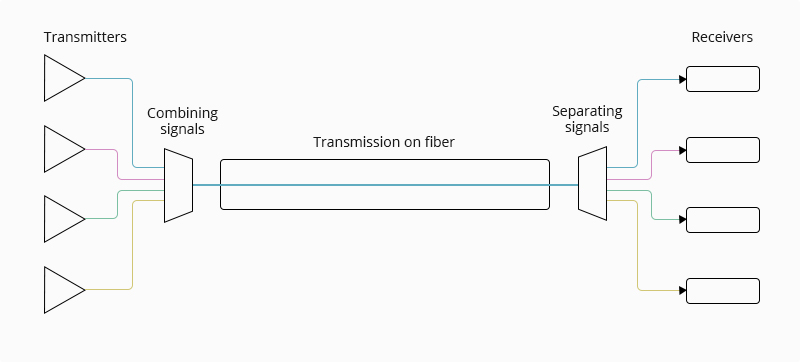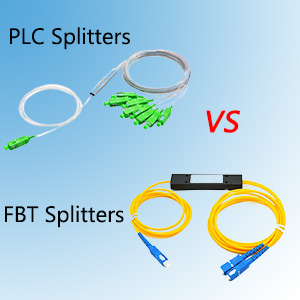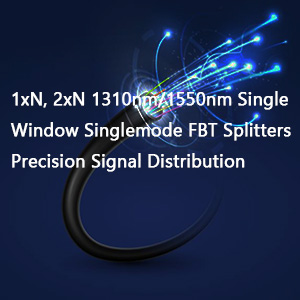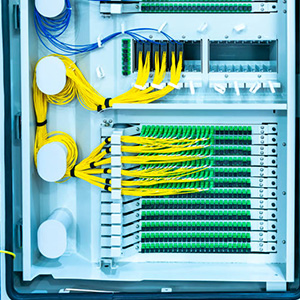DWDM is short for Dense Wavelength Division Multiplexing. It is a combination of optical wavelengths that can be transmitted by one optical fiber. It is a laser technology used to increase the bandwidth of existing optical fiber backbones, allowing optical fiber networks to transmit signals of multiple wavelengths at the same time. At the same time, in the DWDM system, Mux/Demux are two irreplaceable components. So how should these two components be used in the DWDM system, and what types are included in DWDM Mux/Demux. Today, fiber-life has reviewed relevant content for you. If you are interested, don’t miss it.
DWDM Mux/Demux Introduction,Usage Details
In a DWDM network, a multiplexer (MUX) and a demultiplexer (DEMUX) are required for the combination and separation of optical signals.
Mux is a module at the transmitter end that brings several data signals together for transporting over a single fiber, while demux is a module at the receiver end that separates the signals that come together and passes each channel to an optical receiver. DWDM mux demux modules are made to multiplex multiple DWDM channels into one or two fibers. It can extend the bandwidth of an optical communication network with low cost and long transmission distance, which makes it an ideal network solution.The picture below can be a good reference.

Single-fiber DWDM Mux Demux and Dual-fiber DWDM Mux Demux
DWDM Mux Demux can be divided into single-fiber and dual-fiber. As for single-fiber DWDM Mux Demux, it requires only one single optical fiber to transmit the signals. This transmission can be either unidirectional or bidirectional. Unidirectional single-fiber means that the optical module is connected via a single fiber, allowing signals to be transmitted only from the transmitting end to the receiving end, with no reverse transmission. The advantage of this transmission is that the system is relatively easier to design, and it allows for convenient monitoring of individual wavelengths. On the other hand, bidirectional single-fiber means that bidirectional transmission can be achieved using a single fiber (upstream and downstream signals are transmitted on the same fiber using different wavelengths). This significantly saves fiber resources but comes with higher costs.
Dual-fiber DWDM Mux Demux uses two optical fibers, one of which only transmits the optical signal in one direction, while the other transmits the optical signal in the other direction. Bidirectional dual-fiber transmission is the most commonly used optical communication method. The wiring is simple, and the technology is mature. However, it occupies twice the fiber resources compared to single-fiber technology, resulting in higher costs.
When choosing a single-fiber or dual-fiber DWDM mux demux, the decision can be made based on factors such as transmission requirements, existing optical fiber resources, and cost. Generally, if fiber resources are tight or cost-sensitive, single-fiber mux may be preferred. If fiber resources are sufficient, you may be more inclined to use dual-fiber technology because it is more mature and stable and reliable.
The Wavelengths of DWDM Mux Demux
In DWDM systems, the optical communication spectrum is typically divided into several wavelength ranges, with each range corresponding to specific wavelengths. DWDM Mux Demux is differentiated based on the different operating wavelength bands, and the specific band selection needs to be coordinated with the overall network architecture and equipment. The DWDM wavelength bands are mainly categorized as follows:
a. C-Band (Conventional Band) DWDM Mux Demux: The wavelength range covers approximately 1530 nm to 1565 nm and is the most commonly used DWDM band. The C-band multiplexer and demultiplexer covers a large number of DWDM channels, and fiber loss and device performance are optimal within this band.
b. L-Band (Longer Wavelength Band) DWDM Mux Demux: It encompasses the range of approximately 1565 nm to 1625 nm. The application of the L-Band has been increasing, primarily because the C-Band has become saturated, and the L-Band offers additional channel capacity.
c. S-Band (Short Wavelength Band) DWDM Mux Demux: The operating range of DWDM mux demux in this band is approximately from 1460 nm to 1530 nm, usually the range below the C-band. The application of the S-Band is relatively limited, partly due to higher fiber losses in this region compared to the C-Band and L-Band.
In a DWDM system, the number and range of wavelengths supported by each mux demux device depend on the overall system requirements and configuration. In different application scenarios, multiple mux demux units may be employed in the DWDM system, with each mux and demux handling specific wavelength ranges according to the network design’s needs. This approach enhances the flexibility of optical network architecture and increases capacity.
Passive DWDM Mux Demux or Active DWDM Mux Demux
DWDM mux demux can be divided into active DWDM mux demux and passive DWDM mux demux according to whether the device needs a power supply or not.
1. Passive DWDM Mux and Demux
“Passive” indicates the DWDM Mux Demux is an unpowered, pure optical equipment. It requires zero maintenance, upgrades, or electricity to function properly. A passive DWDM mux demux includes a dispersion device, interference device, optical coupler, and so on. Passive DWDM mux demux is a plug-and-play system, which is simple and convenient to use. It is mainly applied to the access layer of MAN, campus network, enterprise network, and various special industry networks (such as banking, public security, etc.). At present, passive DWDM mux demux is widely used in optical fiber communication solutions.
1. Active DWDM Mux and Demux
“Active” means the device needs a power supply. Although passive MUX is simple and convenient to use, it lacks OAM functionality and does not have protection mechanisms in case of link failures. To solve this problem, active DWDM mux demux has been offered by FS. Based on the passive DWDM mux demux, it adds optical switches, optical splitters, and other devices in the optical fiber link. This DWDM mux demux device needs to be connected to the power supply by default, when the power is on, it can be used as an active DWDM Mux Demux to monitor each port in real time; when the power is off, the device can still be used as a passive DWDM Mux Demux without affecting the link transmission. It combines the advantages of active and passive DWDM Mux Demux and effectively solves the shortcoming of passive DWDM Mux Demux which cannot be managed and maintained through the intervention of active equipment. Therefore, it is now becoming a more popular deployment choice in networking solutions.
The Packaging Types of DWDM Mux Demux
DWDM mux demux come in three different packaging forms – 1U 19″ rack-mounted, FMU plug-in, and splice/pigtailed ABS box. The first type is in 1U 19″ rack-mounted package, easy to install. The second one is FMU plug-in, which can be used with 19″ rack chassis. It is very convenient for use by just plugging in. The last one is in an ABS box package based on standard thin film filter (TFF) technology and its pigtails are labeled with wavelengths. It takes little space and can be installed in various chassis. The pictures below can show more details.

Summarize
For those with high network requirements, DWDM technology can be used in the device. It is important to know that DWDM multiplexer/demultiplexer is known as one of the most cost-effective network solutions with extended optical fiber capabilities. That’s it DWDM Mux/Demux Introduction: Usage Details Snd Various Types. If you want to know more about DWDM Mux Demux, please follow fiber-life’s latest blog article and let’s make progress together.











Pingback: Summary Introduction Of Data Center Level Classification - Fiber Life
Pingback: Fiber Life DWDM & CWDM Mux And Demux Guide - Fiber Life